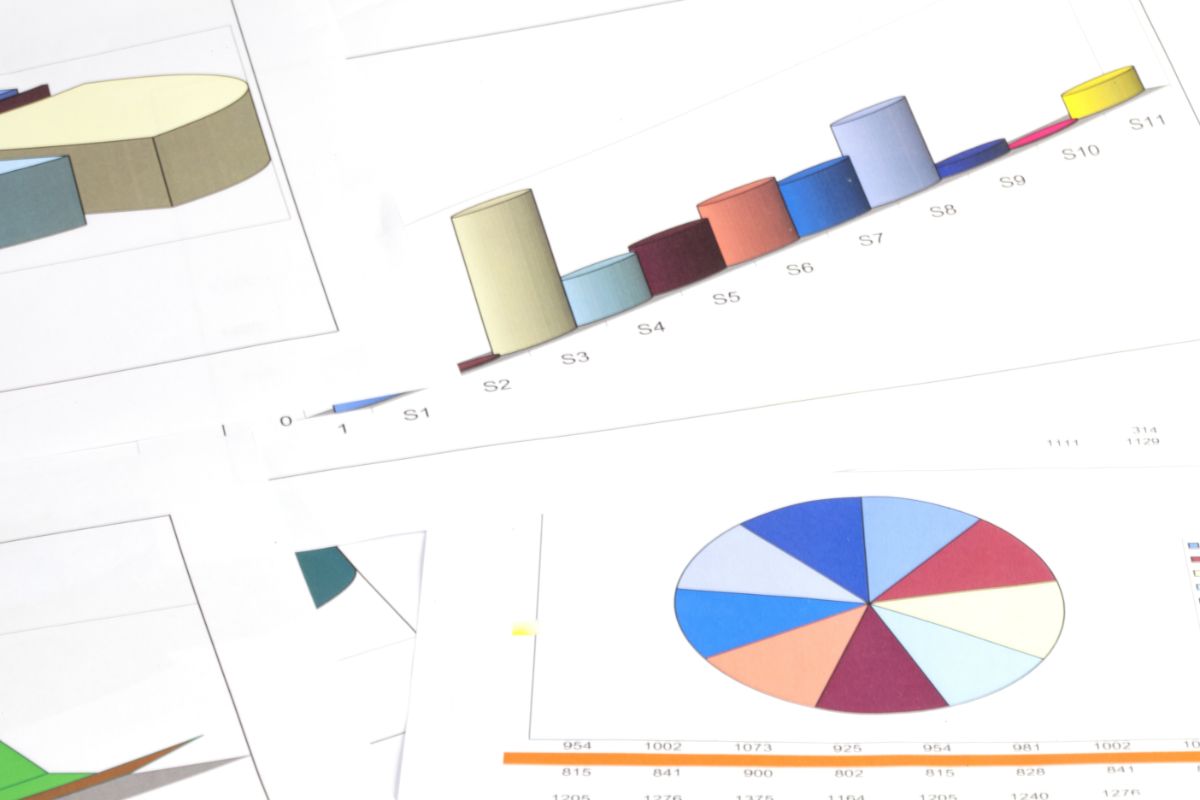What Does Nominal Mean?
If you’re wondering what nominal data is and what it’s used for, you’ve come to the right place. This article will explore everything you need to know about nominal data.
There are four main types of data that you should be aware of when you are working with data in any environment. These are ordinal, interval, ratio and nominal.

What Is Nominal Data?
Nominal data is a type of data that places variables into different categories. These variables are usually descriptive of the data, they won’t be numeric or quantitative.
The various categories won’t be able to be placed in a hierarchical order. Instead, these categories will be nouns or labels.
Nominal data is sometimes represented by numbers instead of words, but these numbers will always represent different groups. For instance, number 1 represents brown hair, 2 represents black hair, and so on.
These numbers are just to easily identify the category, and they are not hierarchical. Nominal data is very simple and it is the least precise level of measurement.
How To Identify Nominal Data
There are three key characteristics of nominal data. These include:
- Nominal data is categorical. There is no overlap between the categories as they are mutually exclusive.
- Nominal data is labeled and this is how it is categorized. The categories are not quantitative or numeric. Instead, they are purely descriptive.
- Nominal data can’t be placed in order and is not hierarchical. There is no category that is worth more than another.
What Are The Four Main Types Of Data?
The four main types of data refer to four different levels of measurement. These measurement levels help us understand how a variable has been recorded.
Nominal Data
Nominal data is a type of data that is categorized. For instance, groups may be things like hair colors.
Ordinal Data
Ordinal data is a type of data that is both ranked and categorized by a hierarchy. It can be split into groups like high income, medium income and low income.
Interval Data
This data is ranked in the same way as ordinal data but it is ranked between the categories that are listed above.
Ratio Data
Ratio data is very similar to interval data. It can be categorized and ranked and there are times when there are equal intervals between the different bits of data.
This data has a true 0, so it can’t measure things like temperature. When temperature has a weight of 0, this doesn’t mean that it doesn’t have any temperature.
If something has a weight of 0, it has true 0 as it doesn’t weigh anything.
Nominal Vs Ordinal Data
Nominal and ordinal data are both types of categorical data. However, there is one main difference between the two.
Nominal variables are categorized, but there is no order or hierarchy to these categories. Ordinal variables are slightly different to this. They can be divided into categories that can be ordered.
Nominal data can be split into categories like hair color, however, you can’t order these categories in order of importance. These categories can’t be naturally ordered, making this data nominal.
Ordinal data is split into categories and it can be ordered. For instance, something like education level has a clear hierarchy. This has a natural order, where one is clearly above another.
How Is Nominal Data Collected?

Nominal data gives you an insight into whatever it is you are collecting data on. It will give you an insight into the population or sample. This is very useful for many different areas.
Nominal data is often used in education, business, psychology or healthcare. All of these scenarios use nominal data in order to help you to learn more about your target demographic.
The most common way to collect nominal data is through surveys. When you are collecting this data, it is important to remember that these variables should be able to be split into a few categories.
It is important that they are able to be categorized.
In order to do this, you can use multiple choice questions to make sure that your audience doesn’t answer outside of the expected categories.
After collecting your nominal data, you will then have a set of answers that can be analyzed. It is important to look at how to analyze nominal data.
How To Analyze Nominal Data
Nominal data is one of the simplest forms of data to analyze. You can use descriptive statistics in order to understand how your data is distributed.
Two ways that you can use descriptive statistics for nominal data are central tendency and frequency distribution.
Frequency Distribution
Frequency distribution tables are a very useful way to analyze this data. If you have been collecting data, sometimes the raw data can be confusing and unstructured.
You can structure this data very easily by creating a frequency distribution table.
When you have gathered your information, set up a spreadsheet with the important information on it. Then use Microsoft Excel to create a pivot table using this information.
Central Tendency
Finding the central tendency can be very useful when analyzing nominal data.
This helps you to identify the center of your dataset. This can be found using the averages: the mean, mode and median.
Frequently Asked Questions
Why Are There So Many Different Types Of Measurement?
There are lots of different types of measurement because it is important to have the ability to determine how to analyze your data.
When you are analyzing your data, you will be able to use descriptive statistics in order to summarize the characteristics of the data that you are looking at.
The different methods of measuring your data will be good for different things.
Final Thoughts
Nominal data is a type of data that can be categorized. The categories are descriptive and they cannot be ranked in any order, meaning they are not hierarchical.
You should now have all the information you need on nominal data!
- What Polls Reveal About Sleeping Together Early and Long-Term Relationship Success - July 7, 2025
- How to Design a Hard Harry Potter Trivia Challenge - October 4, 2023
- How to Design a Dear Peachie Makeup Preference Poll - October 4, 2023








